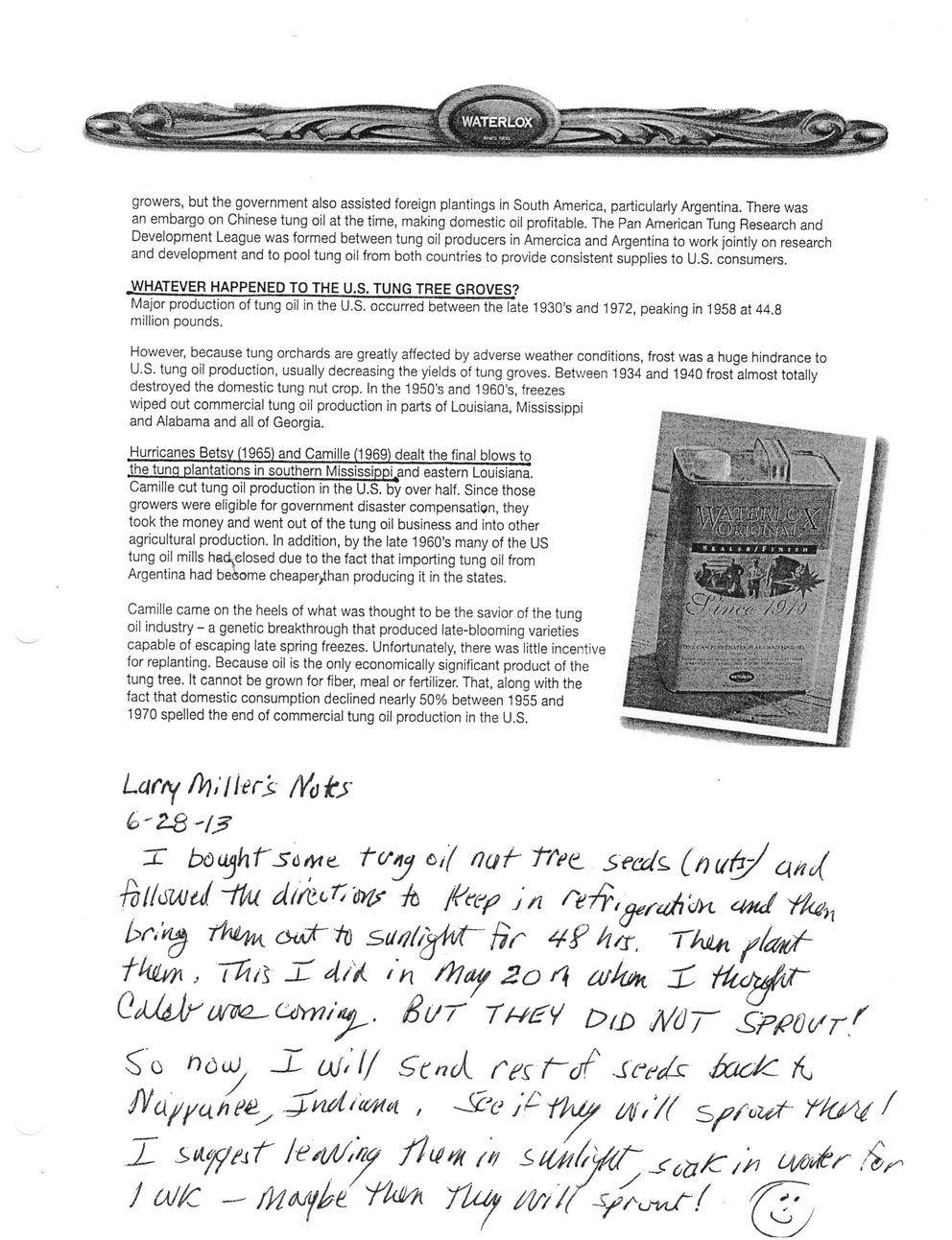This text was obtained via automated optical character recognition.
It has not been edited and may therefore contain several errors.
growers, but the government also assisted foreign plantings in South America, particularly Argentina. There was an embargo on Chinese tung oil at the time, making domestic oil profitable. The Pan American Tung Research and Development League was formed between tung oil producers in Amercica and Argentina to work jointly on research and development and to pool tung oil from both countries to provide consistent supplies to U.S. consumers. _WHATEVER HAPPENED TO THE U.S. TUNG TREE GROVES? Major production of tung oil in the U.S. occurred between the late 1930?s and 1972, peaking in 1958 at 44.8 million pounds. However, because tung orchards are greatly affected by adverse weather conditions, frost was a huge hindrance to U.S. tung oil production, usually decreasing the yields of tung groves. Between 1934 and 1940 frost almost totally destroyed the domestic tung nut crop. In the 1950?s and 1960?s, freezes wiped out commercial tung oil production in parts of Louisiana, Mississippi and Alabama and all of Georgia. Hurricanes Betsy (1965) and Camille (1969) dealt the final blows to the tuna plantations in southern Mississippi and eastern Louisiana. Camille cut tung oil production in the U.S. by over half. Since those growers were eligible for government disaster compensation, they took the money and went out of the tung oil business and into other agricultural production. In addition, by the late 1960?s many of the US tung oil mills had^elosed due to the fact that importing tung oil from Argentina had belsome cheaper>than producing it in the states. Camille came on the heels of what was thought to be the savior of the tung oil industry - a genetic breakthrough that produced late-blooming varieties capable of escaping late spring freezes. Unfortunately, there was little incentive for replanting. Because oil is the only economically significant product of the tung tree. It cannot be grown for fiber, meal or fertilizer. That, along with the fact that domestic consumption declined nearly 50% between 1955 and 1970 spelled the end of commercial tung oil production in the U.S. Larry fyi I i-ers Note X bdujhf'SdMz t(s*j c/f nu-h secd<L atio( fdlltMied ~fiM dik&W it fSeep J si br,?^ ffahn fir h/x, Thin , Tfitl 4/A (n rilcy 2o ^ a/bn X* (IdUir'. But 77/^y ois> jvd~r Sppot/r1' r>6oJ/ _ oA // ?tn(k_ rwt'df sw/c Sack: A, JVa/f/a ft j?fh/p i/q,Z( / X it flm*H ft s>iu*/<ycr 1 aJlc ? fodJfkt fUy

Amish 21